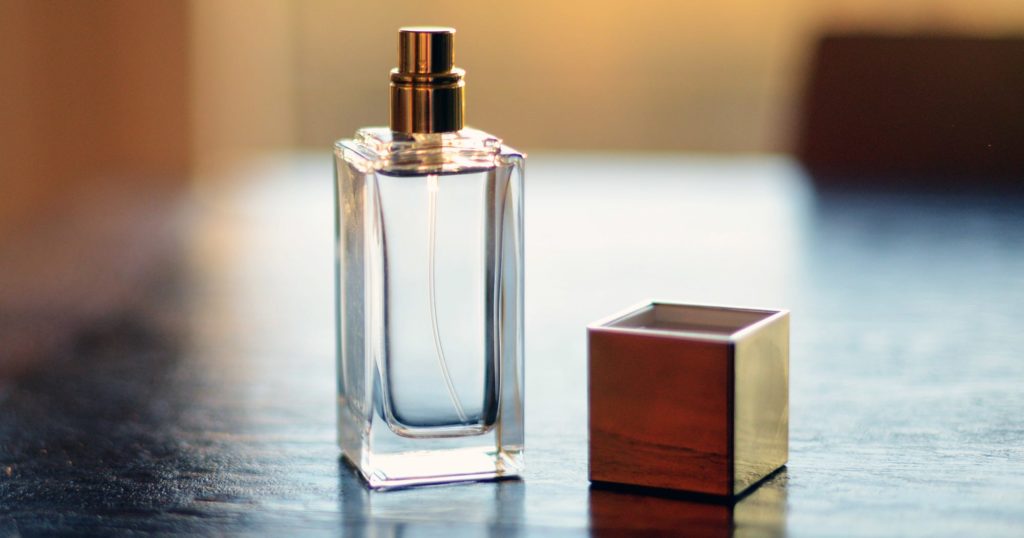Here’s a checklist for a start…
- If it’s clear no colour. Nearly all essential oils have a brown or yellow tinged colour.
- No ingredients listing on packaging, if not on the product then check the website. If not on either email the company and ask what the ingredients of their perfume is.
- If it’s on the less expensive side. We all know quality essential oils are not cheap.
A transparent ingredient list of a natural perfume looks like this…
A typical natural perfume ingredient list
Natural ethanol from sugar cane* (ethyl alcohol), 100% natural fragrance blend (parfum) (extracts from Mimosa Flowers Olessence Natural, Santalum spicata (sandalwood Australia)* oil, ionone alpha natural isolate, Vetiveria zizanoides (Vetiver)* Root Oil , Cistus ladaniferus (labdanum) extract, rosa damascena (rose) flower extract, Hibiscus abelmoschus (ambrette) seed extract, guaiacum sanctum (guaiac) wood oil, mentha piperita l. (peppermint) leaf absolute, Boletus edulis (mushroom) whole plant extract, Copaifera Officinalis (copaiba) balsam, Prunus Armeniaca (Bitter Almond) Kernel Oil, ionone beta natural isolate, l 1-hexanol natural isolate, Anthemis nobilis (chamomile)* oil), distilled water (aqua).
or this
An ingredient list of a NON- NATURAL PERFUME looks like this
Alcohol denat, Parfum, Aqua, Benzyl Alcohol, Benzyl Benzoate, Benzyl Cinnamate, Citral, Citronellol, Coumarin, Eugenol, Farnesol, Alpha isomethyl ionone, Geraniol, Hidroxycitronellal, Buthylphenyl Methylpropional, Limonene, Linalool, Methyl 2-Octyneate.
Natural perfumes don’t go stale when you where them, they subtly lose their intensity over hours, but fake natural perfumes get a stale odour over time and smell a bit like a perfume section in a department store.
Choose wisely, as well as effecting those around us. It adds to our body’s toxic load.

